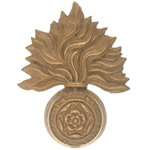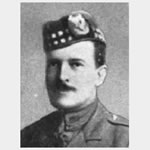Commemorated: | |||
| 1. Memorial: | Loos Memorial | Panel 130 to 135. Loos | |
| 2. Book: | The (1921) Masonic Roll of Honour 1914-1918 | Pg.137 | |
Awards & Titles: | |||
Family :
Son of Ada Tremearne, of Melbourne, Australia, and the late John Tremearne. M.R.C.S. (England); husband of Mary Tremearne, of Tudor House, Blackheath Park, London. ,Education & Career :
M.A., Christ's College (Cambridge), LL.M., M.Sc.
Barrister-at-Law, of Gray's Inn, London.
Service Life:
Campaigns:
- The Fourth Anglo-Ashanti War 1895-1896, West Africa.
- The Second Anglo-Boer War 1899-1902, South Africa.
- The First World War 1914-1918, World-wide.
| Unit / Ship / Est.: 22nd Battalion London Regiment (The Queen's) |
1/22nd (County of London) Battalion (The Queen's) August 1914 : at 2 Jamaica Road, Bermondsey. Part of 6th London Brigade, 2nd London Division. Moved on mobilisation to St Albans area. 16 March 1915 : landed at Le Havre. 11 May 1915 : formation became 142nd Brigade in 47th (2nd London) Division. |
| Action : The Battle of Loos and associated actions |
"The Battle of Loos (25 September to 18 October 1915) was the major battle on the Western Front in 1915, surpassing in every respect all that had gone before in terms of numbers of men and materiel committed to battle. The preliminary bombardment was the most violent to date and the battle was charaterised by the committment of Regular and Territorial battalions on a large scale, in which the Territorials performed just as well as the Regulars. As the battles on the Western Front in 1915 increased in size and violence, so the casualties increased in proportion: Neuve Chapelle 12,000, Aubers Ridge/Festubert 29,000 , Loos 60,000. 1916 was to take the casualty cost to another level. Loos was intended as a minor role in support of French efforts around Arras but circumstances reduced the French effort. It marked the first use of poison gas by the British. Once the initial assualt had failed the battle continued in a series of actions mostly focused on the northern sector around the tactically important Hohenzollern Redoubt."
Detail :
Arthur John Newman TREMEARNE, known under the acronym AJN Tremearne, (born 1877 in Melbourne) was a British Major, ethnologist and African researcher. He wrote important ethnographic works on the inhabitants of northern Nigeria and the Hausa. At Loos the 8/Seaforths were in the first wave and left their trenches near to the Lens Road redoubt and made good progress towards Loos village. The passed through the German second line and moved towards Hill 70, the Divisional objective. Unfortunately as battalions moved through Loos they became very confused and the momentum and direction of the attack stalled. The amalgamated groups from 44th and 46th Brigades moved up and over Hill 70 resembling a mob rather than a cohesive force and inevitably the Germans were able to counter attack and hold the important Hill 70 Redoubt that dominated the approaches. The Official History states that the CO of the 8/Seaforths was killed as the battalion moved towards Hill 70 and that his second in command (who we believe to be Major TREMEARNE) was killed soon after. Arthur TREMEARNE was the Junior Deacon in his lodge. He was by profession a barrister and was educated at Christ's College (Cambridge). A photo of him appeared in the Illustrated London News Oct 23 1915. Sources; Official History Military Operations France & Belgium 1915 Vol II. Hausa Superstitions and Customs: an Introduction to the Folk-Lore and the Folk (Library of African Study) by Tremearne, Major A.J.N. Published 1913 Ban of the Bori:Demons and Demon Dancing in West and North Africa by Tremearne, Major A.J.N Published 1914.
Obituary "MAJOR A.J.N. TREMEARNE. By the death in action at Loos on 25th September last of Major Arthur John Newman Tremearne the sciences of anthropology and folklore have lost an enthusiastic and diligent student. Major Tremearne was born at Melbourne, Victorira, in 1877, and studed in the universities of Melbourne, Cambridge and London. He received the degrees of M.A. LL.M., M.Sc. and the Diploma of Anthropology (Cantab.), and was also a barrister of Gray's Inn. He saw active service in the South African War of 1899, and also in West Africa, where he held various civil appointments and gained that wide knowledge of the Hause language that led to his obtaining the Hausa Scholarship at Christ's College, Cambridge where he became Univerity Lecturer in that language. In 1913 and 1914 he visited Tunis and Tripoli to investigate the condition of the Hausa communities in those countries. His published work in anthropology and folklore was considerable. He contributed several important papers to the Journal of the Royal Anthropological Insitute, to the Journal of the Royal Society of Art, Journal of the Society of Comparative Legislation, and to Folk-Lore. hew as also the author of several important works: The Niger and the West Sudan, or the West African Note Book (1910), Fables and Fairy Tales for Little Folk, or Uncle Remus in Hausa Land (1910) in which he was assisted by his wife; The Tailed Hunters of Nigeria (1912), Hausa Superstitions and Customer (1913) [...]"
Masonic :
| Type | Lodge Name and No. | Province/District : |
|---|---|---|
| Mother : | St Paul's No. 2277 E.C. | Cyprus |
| Joined : | Royal Colonial Institute No. 3556 E.C. | London |
Initiated | Passed | Raised |
30th November -0001 | 30th November -0001 | 30th November -0001 |
Junior Deacon
Arthur was a Petitioner and Founder member of the Royal Colonial Institute Lodge No. 3556, warranted 23rd October 1911. His previous lodge was recorded as No. 2277, but the listing in UGLE's records is proving elusive.
Source :
The project globally acknowledges the following as sources of information for research across the whole database:
- The Commonwealth War Graves Commission
- The (UK) National Archives
- Ancestry.co.uk - Genealogy, Family Trees & Family History online
- ugle.org.uk - The records of the United Grand Lodge of England including the Library and Museum of Freemasonry
Additional Source:
- Founder Researchers : Paul Masters & Mike McCarthy
- Researcher : Bruce Littley

